Designing a part or product that’s going to be made by 3D printing is unlike designing it to be made any other way. As any engineer can tell you, how something will be made greatly impacts its initial design. A part or product must conform to the constraints – and play to the strengths – of the chosen manufacturing process.
Additive manufacturing technologies offer enormous design freedom compared to other manufacturing methods such as injection molding or CNC machining. For example, attributes unique to additively manufactured parts include:
- Internal structures, such as lattice-filled or winding channels
- Complex geometric shapes
- Multi-material design
- Part consolidation
- Mass customization
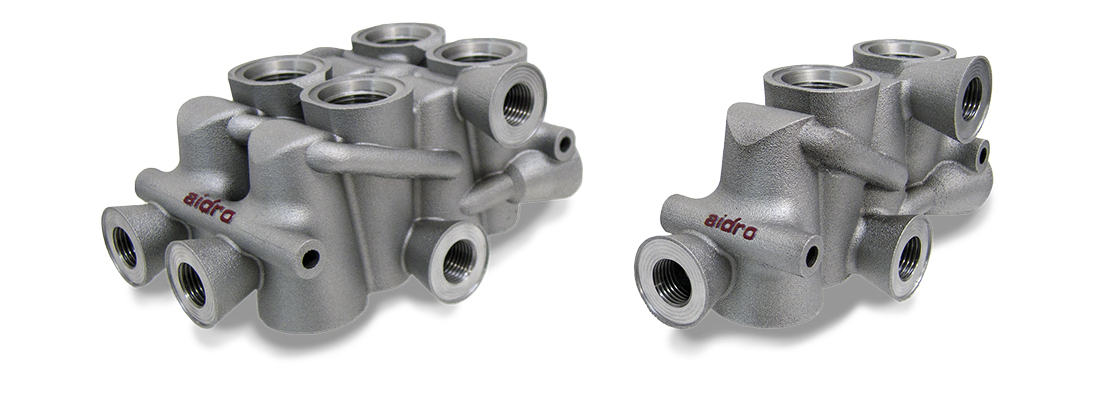
We’re already seeing products and parts across every industry designed for additive manufacturing that weigh less, use less material, and are better functioning. Products, such as rocket engines and hydraulic components that are designed for AM to feature multiple parts consolidated into one unit, which delivers better performance. Product including titanium orthopedic implants and aerospace parts that are lighter weight but stronger than conventionally manufactured versions. Another example is heat exchangers that are designed with internal structures only possible via 3D printing. This enables them to be more efficient, smaller, and uniquely shaped to fit specific spaces.
So much of the design of everything around us, from our vehicles to our shoes, was thought up at a time before additive manufacturing when designers and engineers were constrained by what their tools could create, but not any longer.
But how are designs for additive manufacturing achieved? What software enables designers to imagine with AM in mind? Let’s take a look at the top products and processes in DfAM today.
How Do I Design for AM?
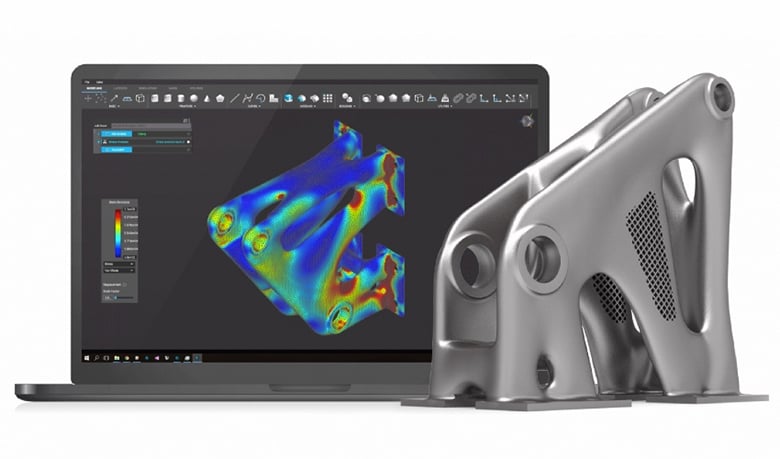
In a recent webinar hosted by Prof. John Hart, who leads MIT’s Additive and Digital Manufacturing Center, he said designing for AM includes three areas:
- Knowledge of AM processes and materials
- An understanding of DfAM tools (mostly software) and adopting a DfAM mindset
- An appreciation for the design problems and opportunities suited to AM
Although there’s a lot of software today to help you design for AM, you still need to understand the essential differences among the 3D printing processes and technologies – from powder bed fusion to stereolithography to material jetting. Each of these offers different part characteristics and design opportunities.
To design for AM, you also need to understand the available materials (plastics, metals, ceramics, etc.) and their characteristics during and after the 3D printing stage.
The tools used for DfAM include a range of software products, many of which you may already be familiar with, such as Fusion 360 or Siemens NX that take a computer-aided design (CAD) digital file and optimize its features for additive manufacturing. These programs enable engineers to create part iterations, simulate stresses on parts, generate the required support structures for the 3D printing process, and even estimate the cost and time of printing the part based on materials and the available printer.
Topology optimization and generative design software (often built into the CAD and DfAM software mentioned above) lets you optimize a component to reduce the required amount of material while maximizing its strength and performance. Software from nTopology and Siemens, plus modules for CAD programs inducing Solidworks and Creo, assist engineers in making the intricate calculations involved in topology optimization.
Of course, it’s not enough to know how to optimize your component for additive manufacturing, you have to understand if it’s worth it.
Is Additive Manufacturing Right for Your Product?
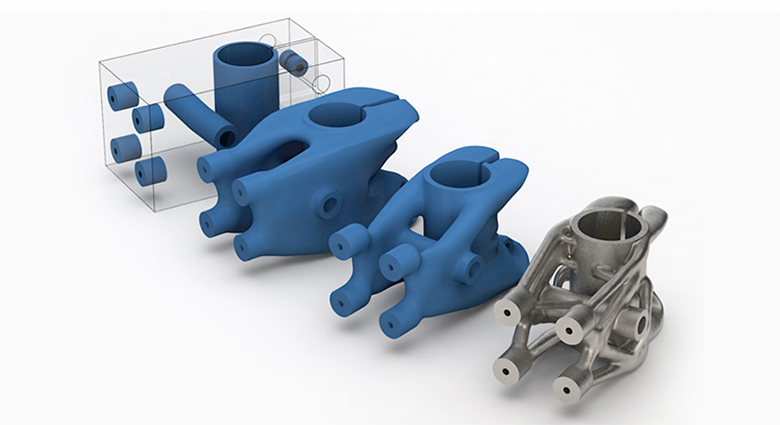
The promise of lighter, stronger, and better performing parts that use less raw material and fewer tools to produce is the lure of additive manufacturing, but it isn’t ideal for everything. Today, the top uses of additive manufacturing are:
- Tools, jigs, and fixtures for manufacturing
- Dental implants and clear aligners
- Rocket and aerospace components
- Custom medical devices and medical models
- Energy industry customized parts
- Prototypes and functional prototypes
Another top benefit of additive manufacturing is the ease of customization of parts. Because AM is a digital-file-to-manufacturing process with no tooling, molds, or much equipment set up, customizations are quick and easy. Where additive manufacturing shines is in custom, unique, limited quantity parts and products, although is it rapidly moving into larger volume manufacturing and mass-customization.
Another point to consider in approaching design for additive manufacturing is whether the end result creates enough of an advantage over the original part to justify the time and expense of AM. Redesigning a part for 3D printing requires upfront costs that should pay off in faster manufacturing, less materials waste, and more efficiency. Especially in the spare part industry, manufacturers are scouring their part inventories looking for parts that can be redesigned to be 3D printed on demand, eliminating the need to manfacture stock inventory parts that may never be used.
Ultimately, DfAM is another tool to help designers and engineers make design decisions to optimize parts and products. To master this new tool, you’ll need to become familiar with additive manufacturing technologies and materials and learn to think differently about how things are made.
Where to Learn DfAM

Design for additive manufacturing is now part of the core curriculum for engineer and industrial design training at colleges and universities worldwide, but there’s also a growing range of professional training available for professionals.
Certificate programs and seminars on DfAM should dive into detail in these areas:
- Overview of AM technologies
- 3D printing fundamentals (build volume, shrinkage and distortion, surface finishes, support structures, etc.)
- Materials for AM (plastics, metals, composites, ceramics, etc.)
- Design guidelines (lattice structures, triangulation, detail resolution, dimensional accuracy, etc.)
- Optimization opportunities (feature integration, complex structures, customization, etc.)
- Cost calculations and comparisons
- Post-processing (heat treatments, support removal, etc.)
Training Opportunities
DfAM Within Your Favorite CAD Programs
Fusion 360
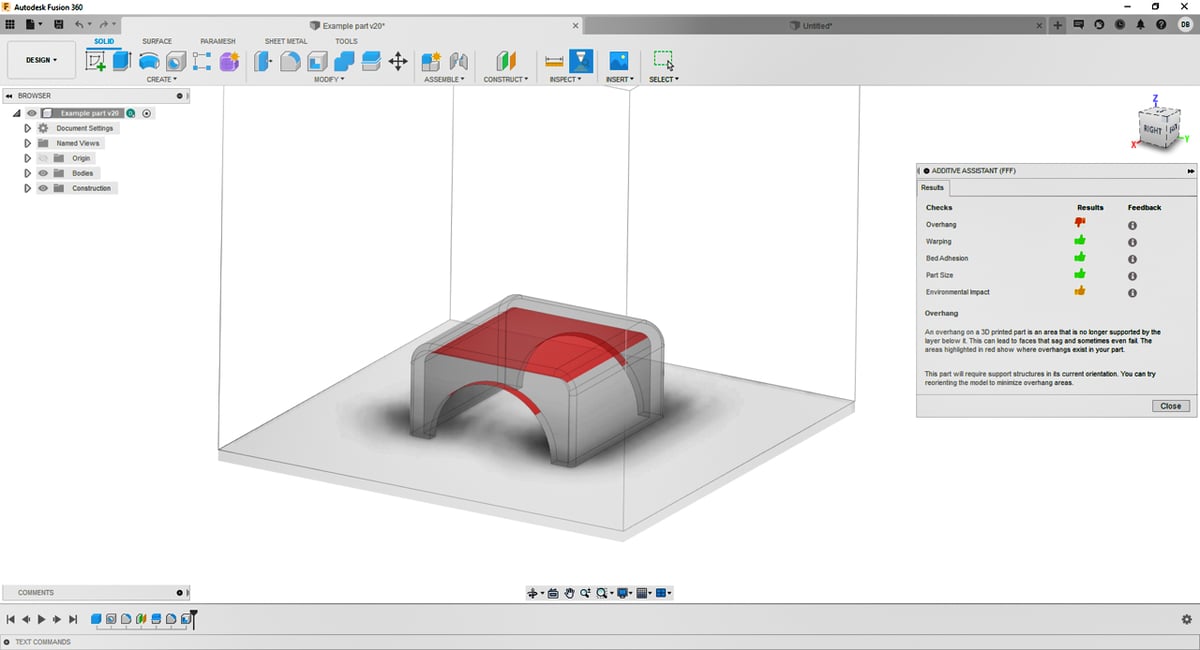
Autodesk has realized that if additive manufacturing methods aren’t included as options in its popular Fusion 360 CAD software, designers will need to make their build calculations elsewhere to avoid costly, late-stage redesigns. This is what’s behind the move to bundle the publisher’s Netfabb solution to Fusion 360, but if you don’t want the full Netfabb option (and pay the extra couple of thousand dollars) Fusion 360 offers some nice DfAM features on its own.
The program’s generative design module enables you to explore multiple manufacturing-ready outcomes that meet your design specifications while reducing weight, improving performance, and consolidating parts. Just plug in your criteria and 3D printing method and the module spits out a wide range of design options to choose from. You can even compare options side by side. Once you choose the best fit, import the optimized element into your design and continue to edit it.
Fusion 360 also comes packed with a pretty powerful simulation environment where you can expose your design to static and thermal stresses, structural buckling, and event simulation-like dropping. The module not only predicts these effects but solves them without pausing your work.
In addition to these included models, Fusion 360 also offers optional paid extensions, including a more advanced generative design option ($495 per year) and the Additive Build extension ($495 per year) for metal powder bed fusion machine AM processes. Additive Build enables you to select 3D print parameters, automatically orient parts, and generate fully associative support structures for efficient programming.
If you’re new to 3D printing the Additive Assistant extension for 3D printing with extrusion-based machines (FDM, Filament Filament Deposition) analyses a number of aspects of your designs and provides clear feedback on how to improve the manufacturability of the part. The tool provides feedback on the areas of overhang, areas that may warp, and whether there’s a risk of poor bed adhesion. It also provides information on reducing the environmental impact.
Siemens NX
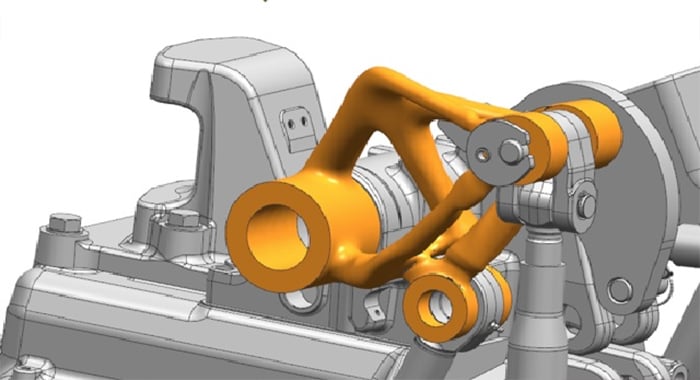
Siemens NX software is one of the most complete platforms for CAD/CAM/CAE engineering design and manufacturing. Although not a solution specific to additive manufacturing, it incorporates a host of tools for automating many of the unique challenges of designing, optimizing, and building metal and plastic components using the latest additive manufacturing methods. It integrates with a wide range of additive manufacturing technologies and printers and even offers a connection to a global supplier network of 3D printing services where you can get your parts printed if you don’t own your own machines.
Designed for companies where input on a product design is a collaboration, NX aims to streamline and accelerate the process with integrated data management, process automation, decision support, and other tools that help you refine your development processes.
Siemens says NX helps companies develop products “right the first time” by using virtual models and simulation to accurately evaluate product performance and manufacturability on a range of 3D printers, and by continuously validating designs for compliance with industry, company, and customer requirements.
NX’s tools specifically for additive manufacturing include generative design, topological optimization, nesting, automated support structure generation, and design validation.
Creo
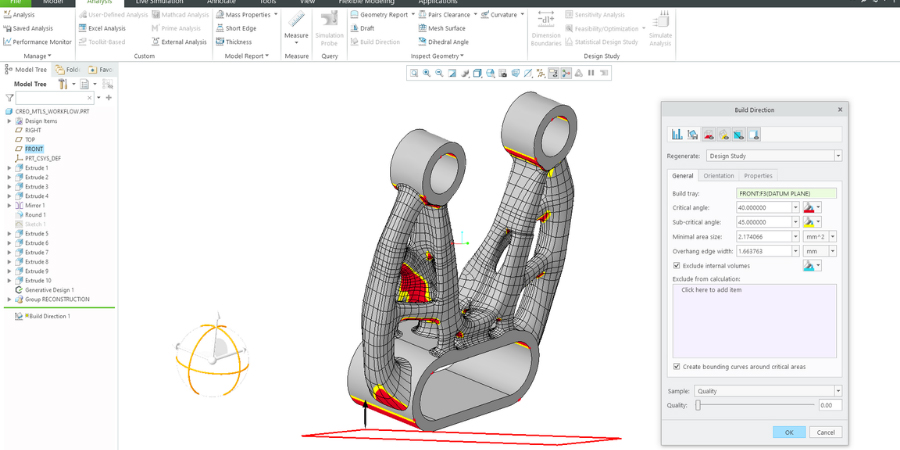
Creo by Parametric Technology Corporation (PTC) is another popular CAD software that’s upping its DfAM options. Now you can combine their easy-to-use design environment with new technologies, such as generative design, augmented reality, real-time simulation, and additive manufacturing.
In the latest version of Creo, you’ll notice expanded AI-drive generative design features that autonomously create designs from a set of criteria you specify, while new simulation tools guide and help validate your design decisions. Creo new Generative Topology Optimization (GTO) extension creates optimized product designs that enable you to simultaneously explore numerous innovative design options, with top options automatically highlighted. The cloud-based Generative Design Extension (GDX) helps you optimize product designs based on your constraints and requirements – including materials and manufacturing processes.
There are also new Creo features to help you simplify designs for additive manufacturing, including simulation-driven lattice design and improvements. Simulation results from CSL and Creo Simulate can now be used to optimize the variability of the lattices. This capability is accessible via the same lattice feature UI and workflow. Creo has partnered with Ansys (mentioned above) to provide a simulation-driven design called Creo Ansys Simulation Live. It provides designers with a way to incorporate simulation early in the design process by using real-time structural, modal, thermal, and fluid flow analysis to iterate on and modify design.
Solidworks
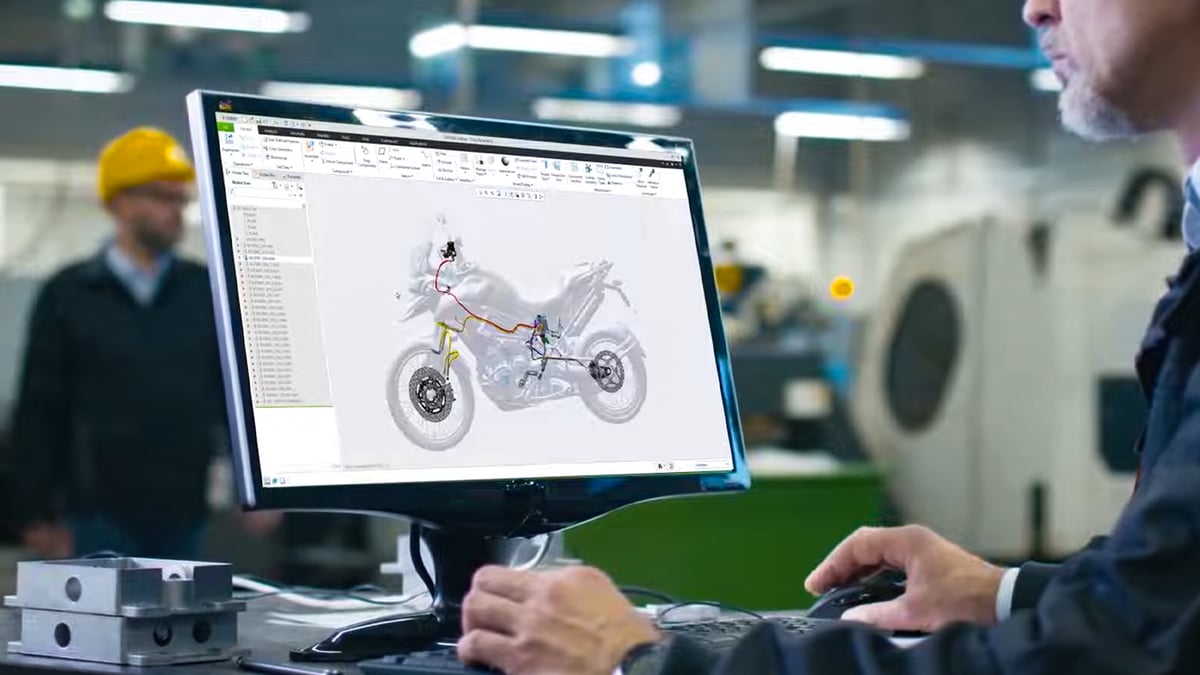
If you’re a Solidworks (Dassault Systèmes) users there are a number of options and plug-ins for this CAD program along with integrations with other platforms from the same publisher. The expanded 3DExperience Works portfolio, from Solidworks, unites your entire ecosystem, allowing you to connect the people, applications, and real-time data from every aspect of your business. The portfolio provides not only 3D modeling, but simulation, data management, and manufacturing solutions.
Specific to DfAM, take a look at the Topology Study in Solidworks Simulation Professional module that lets you focus on validating the design function. The Topology Study takes your desired goals, constraints, and manufacturing options into account to guide your decisions on the component form. You can also incorporate simulation data from Solidworks’ Flow or Motion models to educate your options.
One add-in to the Solidworks platform called ParetoWorks enables you to generate early-stage concepts that balance constraints, objectives, product performance, resources, and time constraints. Its aim is to empower you to explore more designs in less time. ParetoWorks works inside SolidWorks on a desktop or laptop within your design process with no need to transfer data to the cloud.
Solid Edge
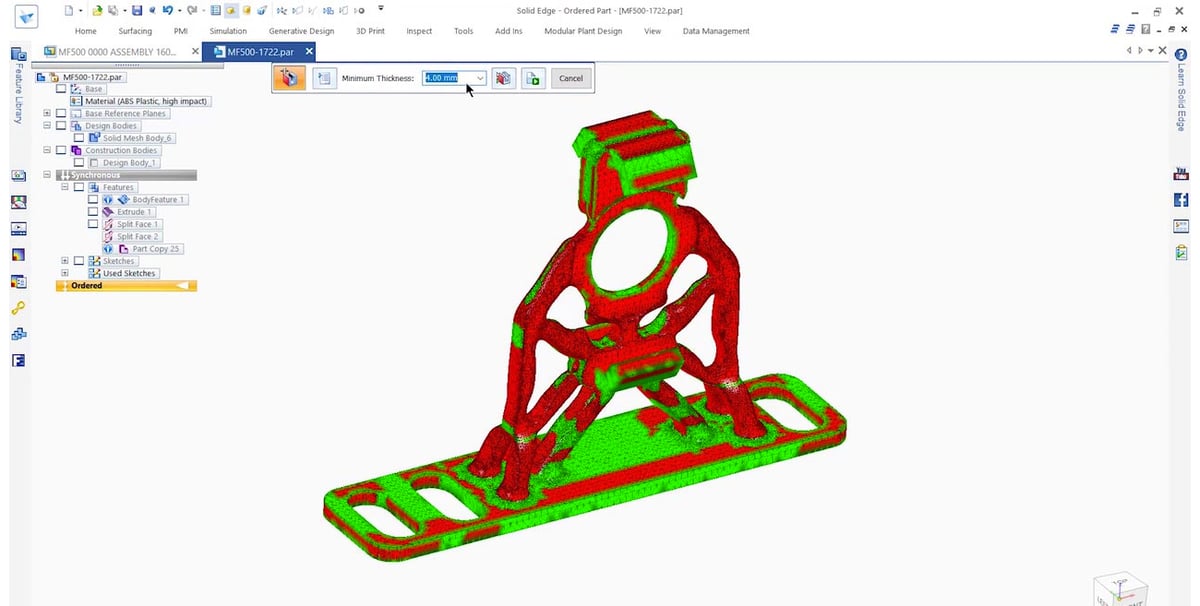
Another Siemens product, Solid Edge is a popular CAD program with integrated DfAM features. The Solid Edge solution for topology optimization allows you to replace small assemblies with a single component and the generative design study can result in interesting new design ideas that can be incorporated into your traditional design process. Both of these features take additive manufacturing perimeters into consideration.
The Solid Edge Simulation module enables you to subject your design to all types of stresses and vibrations to pinpoint potential failures and fix them before you print.
nTopology’s nTop Platform
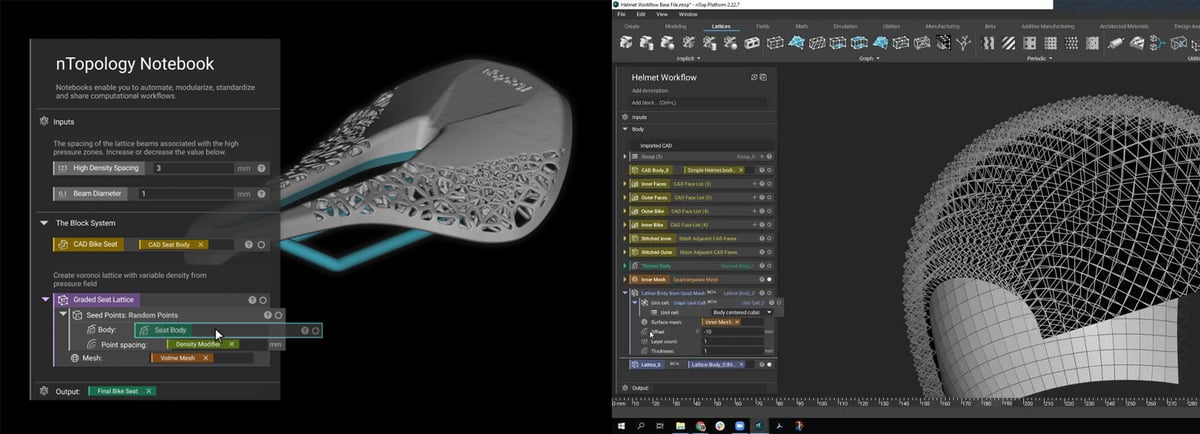
American software startup nTopology offers a comprehensive modeling software suite for designers where they can either design a part for advanced manufacturing from scratch or import an existing digital design file for optimization. The platform helps engineers create lightweight and optimized parts with their functional requirements built in.
In addition to some of the tools you may be familiar with in CAD software, nTop offers toolkits, which are collections of predefined workflows that essentially automate a lot of what you want DfAM software to do. The toolkits include ones for lightweighting, design analysis, and topology optimization.
nTopology not only helps you prepare design data for additive manufacture but also lets you directly communicate with your 3D printers to ensure that your design intent is maintained throughout the process.
nTopology has been collaborating with printer manufacturer Stratasys to deliver essentially one-click processes for some of the most common additively manufactured products. Their FDM Fixture Generator automates about 90% of the design work required for additively manufacturing jigs and fixtures, while the Assembly Fixture Module, automates the design of kitting trays, storage cases, and other simple fixtures to support manufacturing operations.
Ansys Additive Suite
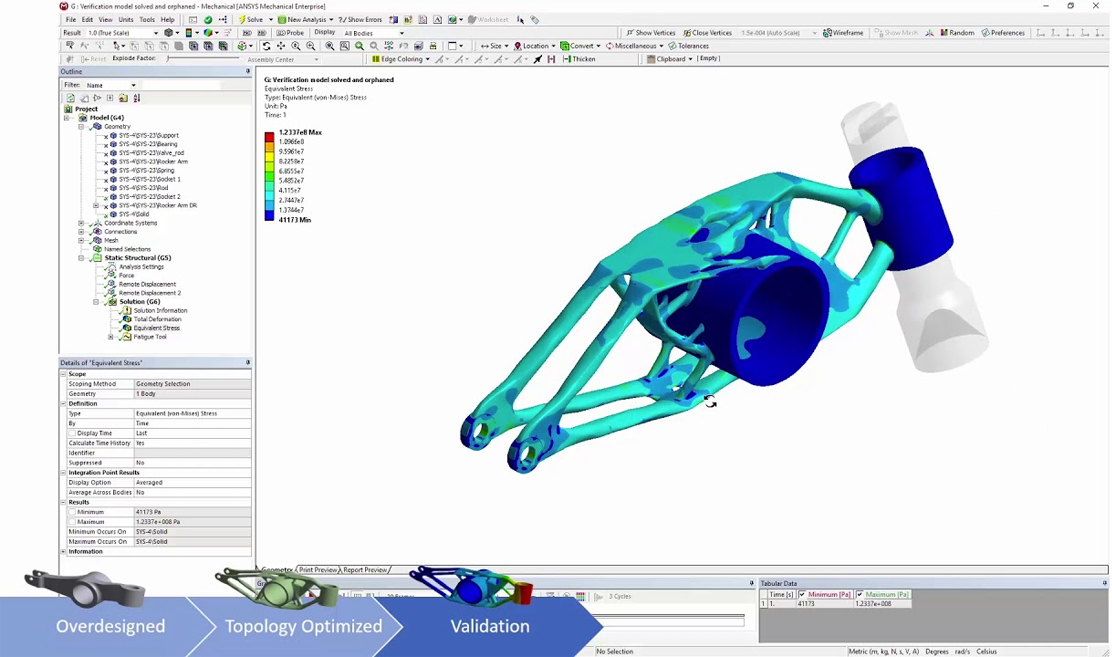
A comprehensive solution for AM designs and engineers, Ansys Additive Suite spans the entire workflow from DfAM through validation, print design, process simulation, and materials exploration.
Focusing exclusively on AM, the platform includes a range of tools for design (topology and lattice optimization) and simulation that’s specifically for AM build processes, such as metal powder bed fusion. The simulation and validation suites are designed to help you calculate for distortion and predict build failures.
In fact, Ansys’ main strength is its engineering simulation software, and its claim to fame is likely its speed. The GPU-enabled rapid modeling feature let you experiment with geometry and materials without taking hours to render, in order to quickly identify the optimal solution to an engineering problem.
The platform’s Additive Science module is a fascinating standalone application for the design-stage investigation of materials and optimal machine parameters. With this tool, you can explore how different materials affect the function of your part and tune your material setting to even predict the porosity and even the grain morphology.
Ansys Additive Suite is available as an add-on to the Ansys Mechanical Enterprise license and a wide range of third-party apps integrate with the system, including ones for mesh generation and lattice simulation.
MSC Apex Generative Design
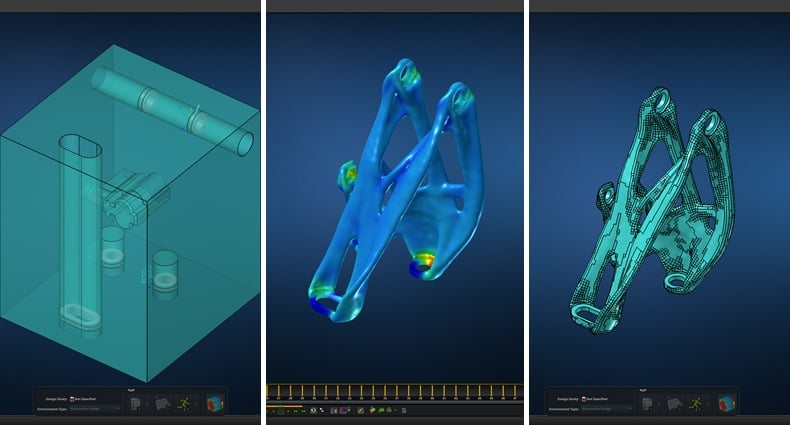
California-based MSC (a division of Hexagon Manufacturing Intelligence) produces a wide range of software solutions for engineers, but here we take a look at their Apex Generative Design product and AM simulation apps. Simufact and Digimat.
Apex Generative Design is an automated solution for optimizing technical parts that includes algorithms to generate complex, lightweight structures for additive manufacturing in a pretty short time. The aim of the software is to make generative design accessible to all types of engineers and Apex promises that the results can be sent straight to print.
Import your CAD file and almost automatically generate multiple design candidates that all satisfy the design criteria you’ve input while minimizing the weight. You can print the resulting files or import them into simulation engines, such as MSC’s Simufact Additive or Digimat AM to achieve “cost-efficient first-time-right results” for every part, MSC says.
Simufact Additive is MSC’s solution for metal additive manufacturing that focuses on build simulation and subsequent steps, including what will happens during heat treatment. You can also identify the best build orientation, determine and compensate for final metal part distortion automatically, predict the influence of several components in the build space, and identify potential manufacturing issues, such as cracks and layer offsets before they happen.
Digimat AM is MSC’s solution for polymer and composite AM providing more predictive simulation tools.
https://www.youtube.com/watch?v=TtiVnxVlRg4
Oqton 3DXpert
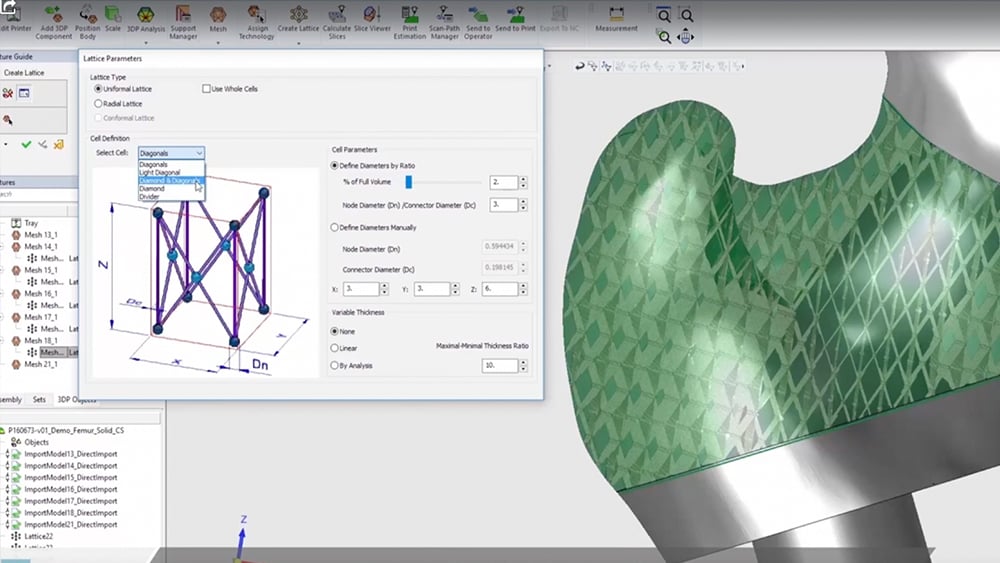
3DXpert, which is now developed and supported by Oqton, following the acquisition of Oqton by 3D Systems, is a “Prepare, optimize, and 3D print high-quality parts in record time with an all-in-one, integrated 3D additive manufacturing software that streamlines workflow, from design to printing,” the company says. It offers tools for everything from lightweighting and topology optimization to streaming your workflows and calculating manufacturing costs.
3DXpert is an AM-first software. Import your CAD file and take your part through topology optimization, lattice creation, support design, and simulate the printing and post-processing, then arrange the build platform and send it to print on any industrial printer (you don’t have to own a 3D Systems machine).
3DXpert version 17 offers AM designers and manufacturers optimization through build prep, simulation, and slicing. This new version helps ensure that customers are more proficient and more productive than ever, in a growing competitive marketplace, the company says.
3DXpert comes in several modules that you can mix and match to your needs. There’s a basic package for automated 3D printing prep, a pro package with more advanced design tools, the Ultimate package for AM, and the AM designer package with the full set of DfAM tools. There’s also a separate module for dental and educational users.
Altair Inspire Print3D

American software publisher Altair provides solutions in the areas of simulation, high-performance computing, and artificial intelligence, with some pretty impressive topology optimization and DfAM tools.
The Altair OptiStruct is one of the earliest topology optimization structural design tools established decades ago to help designers and engineers rapidly develop lightweight and structurally efficient designs. Although not specific to additive manufacturing it does have DfAM features, including complex lattice structure generation. Lattice performance can be studied under tension, compression, shear, flexion, torsion, and fatigue life.
For Additive Manufacturing, Altair Inspire Print3D is designed to cut costs by reducing material usage, print times, and post-processing. It provides a fast and accurate toolset for the design and process simulation of selective laser melting (SLM) parts. Engineers can quickly understand changes to process or design that affect manufacturing efficiency, then export part and support structure geometry to major printer preparation software for printing. It also simplifies the identification and correction of potential deformation, delamination, and excessive heating issues before building a part.
Because Altair has simulation tools for all types of manufacturing, it can help you shop to determine if something is better off manufactured with 3D printers or with a range of traditional methods.
Altair just purchased Gen3D Sulis, and plans to integrate it into Inspire. Sulis enables you to define or change the layout of a concept in real-time using click-and-drag 3D editing tools. The manufacturing checks and compensation tools exploit the benefits of AM and reduce the risk of costly failures. The lattice builder lets you choose between cartesian, cylindrical, or spherical coordinate systems to ensure lattices fit seamlessly within your CAD models.
License: The text of "Design for Additive Manufacturing (DfAM) – The Ultimate Guide" by All3DP Pro is licensed under a Creative Commons Attribution 4.0 International License.

